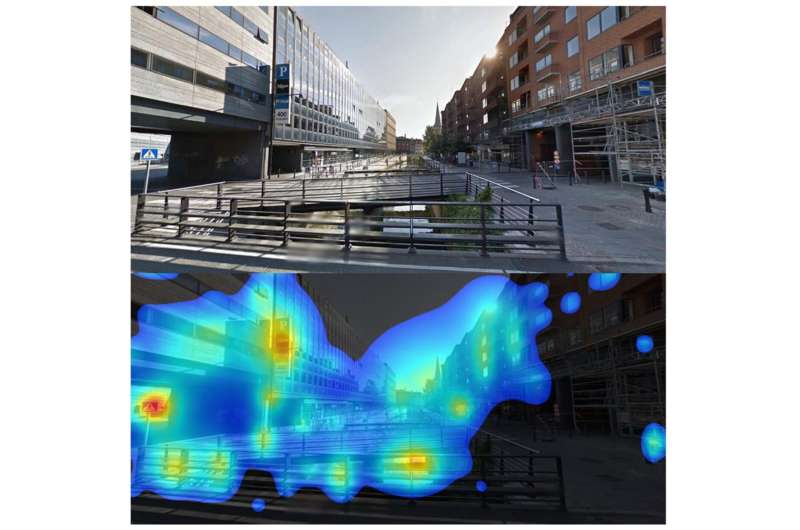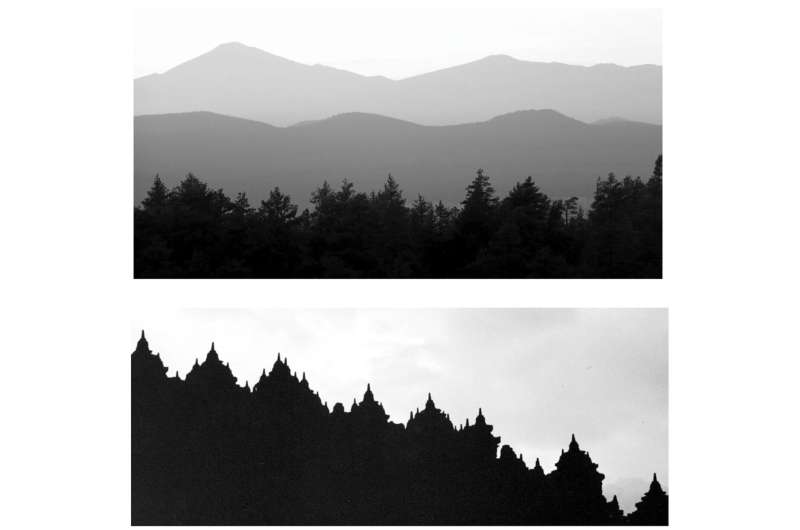The human brain would rather look at nature than city streets

There is a scientific reason that humans feel better walking through the woods than strolling down a city street, according to a new publication from UO physicist Richard Taylor and an interdisciplinary team of collaborators.
The group examined the question: "What happens in your brain when you walk down the street?" and they concluded that urban environments are not pleasing to the human brain.
The reason is the lack of fractals in modern architecture and spaces. Fractals are patterns that self-repeat at different scales, and they can be found all over nature in objects like trees, rivers, clouds and coastlines.
Because of this prevalence of natural fractals, the human brain has evolved to respond favorably to fractals, and to do so in the blink of an eye. The human brain only needs 50 milliseconds to detect the presence of fractals.
"As soon as we look at nature, it triggers a cascade of automatic responses," Taylor explained. "Even before we've noticed what we're looking at, we're responding to it."
And the response is a positive one. Humans experience less stress and better well-being when looking at nature, and this is driven by fractals. Taylor's research has found that fractals can reduce stress and mental fatigue for the observer by as much as 60%.
Taylor also points to research that showed hospitalized patients could heal faster when they had access to a window because looking outside, and at all of the natural fractals, helped patients relax their bodies and heal faster.
"People really need aesthetic environments to keep themselves healthy," Taylor said.

But cities and modern architecture have not been designed to incorporate nature or fractals. Instead, urban environments are heavy on box-shaped buildings, simple corridors and windowless cubicles.
The paper published by the group in Urban Science and covered in the London Times stresses that design should be influenced by research and more buildings and spaces should be human-centered, as it would lead to reduced stress and greater well-being. And while stress currently costs the U.S. economy more than $300 billion a year, it's an investment that would be worthwhile in many ways, Taylor said.
"Humans do not like looking at boxes," he said. "We need to reclaim our urban environment and put nature back into it."
But it's not as easy as painting a tree on the side of a building and calling it a day. The fractals have to be modified because people respond differently to patterns embedded within the relatively simple surroundings of a building than the complexity of natural scenes.
So Taylor is collaborating with UO psychologist Margaret Sereno and architect Ihab Elzeyadi on scientifically informed design projects that incorporate the kind of fractals that are pleasing to the human brain when viewed in the spaces people work and live in. Some examples are the fractal carpets that Taylor's team designed for the Knight Campus and spaces like workplaces, schools, airports and other places where people experience heightened anxiety.
That same design concept could be integrated into ceilings, window blinds and other parts of modern architecture, Taylor said. The UO collaborators have another project that develops fractal patterns for rooftop solar panels.
He points to a college campus as a prime place to prioritize making architecture and design more human-centered. Imagine, he said, if students were able to look at fractals instead of simple boxes and walls on an exam morning. That would automatically reduce their stress and put their minds in a better place for the test.
"At our biological core is the desire to feel relaxed; it's an essential need as a human," Taylor said. "We can derive so many benefits from the stress-reducing quality of nature and we can measurably increase people's well-being by reintroducing nature to design and architecture."
More information: Aenne A. Brielmann et al, What Happens in Your Brain When You Walk Down the Street? Implications of Architectural Proportions, Biophilia, and Fractal Geometry for Urban Science, Urban Science (2022). DOI: 10.3390/urbansci6010003
Provided by University of Oregon




















